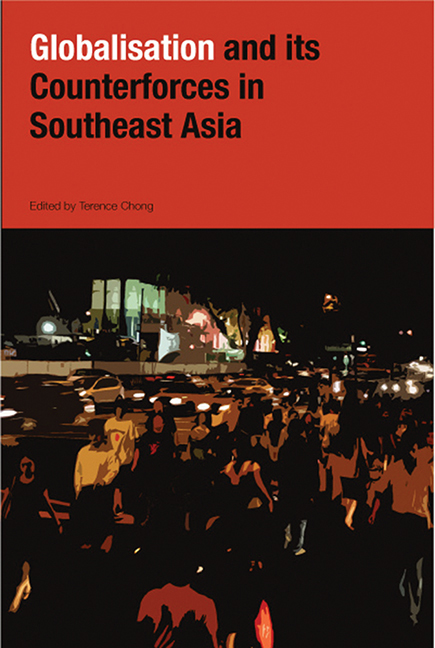Book contents
- Frontmatter
- Contents
- Foreword
- Preface
- The Contributors
- Introduction
- Part I The Political Contradictions of Globalization
- Part II Economic Regionalism and Global Influences
- Part III Local Security, Global Insecurity
- 9 Maritime Piracy and Raiding in Southeast Asia: Local and Global Perspectives
- 10 Competing Globalization: The Case of European Cooperation with Indonesia against International Terrorism
- 11 Radical Islam and Political Terrorism in Southeast Asia
- Part IV Social Processes: Arrested Development
- Part V Cultural Production in the Global Matrix
- Index
11 - Radical Islam and Political Terrorism in Southeast Asia
from Part III - Local Security, Global Insecurity
Published online by Cambridge University Press: 21 October 2015
- Frontmatter
- Contents
- Foreword
- Preface
- The Contributors
- Introduction
- Part I The Political Contradictions of Globalization
- Part II Economic Regionalism and Global Influences
- Part III Local Security, Global Insecurity
- 9 Maritime Piracy and Raiding in Southeast Asia: Local and Global Perspectives
- 10 Competing Globalization: The Case of European Cooperation with Indonesia against International Terrorism
- 11 Radical Islam and Political Terrorism in Southeast Asia
- Part IV Social Processes: Arrested Development
- Part V Cultural Production in the Global Matrix
- Index
Summary
INTRODUCTION: THE CONVENTIONAL VIEW OF ISLAM
The term “globalization” has many meanings. To some it is the spread of trade and production on a global scale. Proponents of this view differ over whether globalization is a recent phenomenon or a process that has been underway for centuries. To others, the chief characteristic of globalization is the spread of communications technology that compresses time and space, particularly in the speed of processing information and commercial transactions. A third view maintains that globalization is the spread of Western, particularly American, culture and values. This latter view is myopic because it overlooks the spread of Islam and Islamic values as part of the globalization process. This chapter is concerned with the relationship between radical Islam and political terrorism in Southeast Asia. There can be no doubt that the spread of communications technology assisted in the mobilization of Muslim volunteers to join the global jihadist cause and a growing sense of identity among radical Muslims in Southeast Asia, Central Asia and the Middle East. Globalization, in this sense, has facilitated the emergence of political terrorism in Southeast Asia. But globalization alone does not fully explain this development. Political terrorism in Southeast Asia has historical roots in indigenous society and its emergence can be traced, in part, to state repression of Islam. It is the combination of global and domestic forces that explains the appearance of radical Islam and political terrorism in the 1990s.
Prior to the Bali bombings of 12 October 2002, the conventional view of Islam in Southeast Asia, and Islam in Indonesia in particular, was that it differed from Islam in the Arab Middle East and Pakistan. Islam in Southeast Asia was viewed not only as moderate but inward looking and tolerant. The conventional view also held that radical Islam represented a tiny minority and was not influential politically either domestically or in regional affairs. The vast majority of Southeast Asia'S Muslims are Sunni.
- Type
- Chapter
- Information
- Globalization and its Counter-Forces in Southeast Asia , pp. 256 - 276Publisher: ISEAS–Yusof Ishak InstitutePrint publication year: 2008



